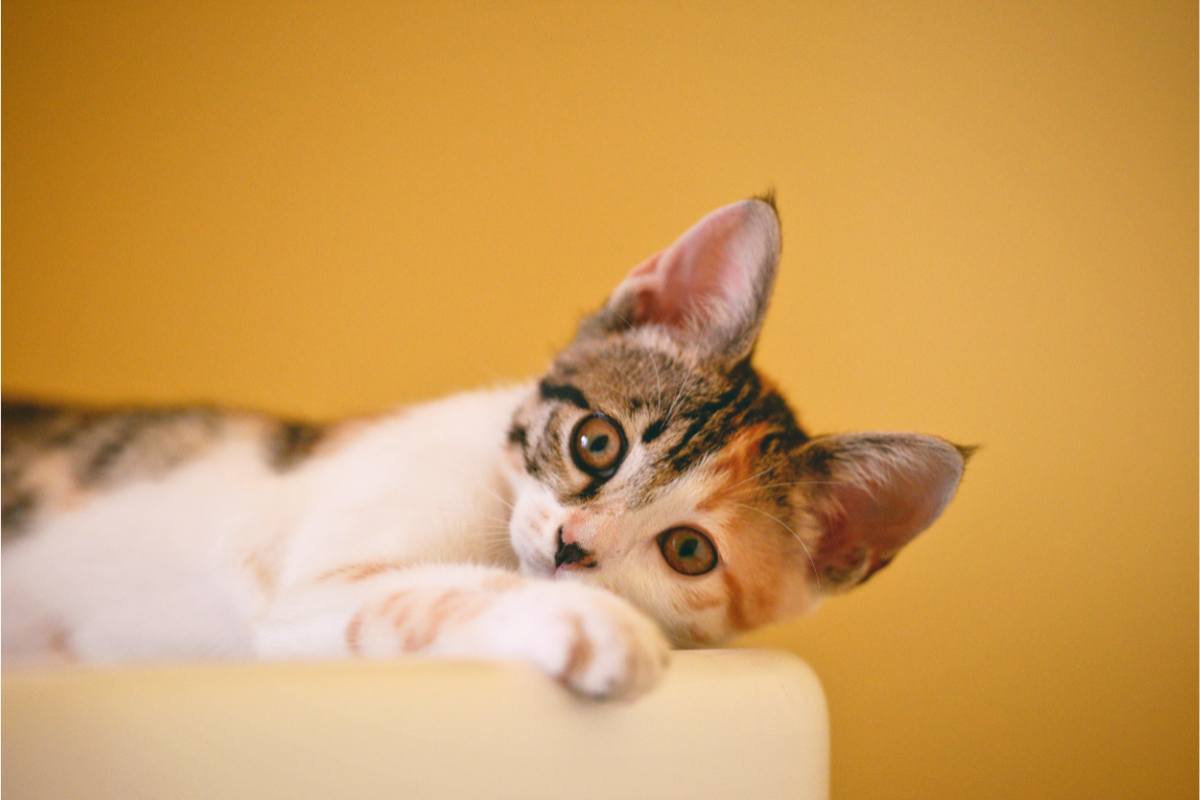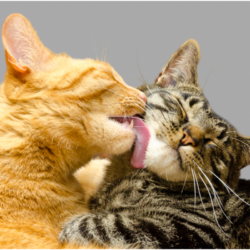Feline immunodeficiency syndrome (FIV), commonly known as cat AIDS, is a serious viral disease that affects domestic felines. Transmitted mainly through bites and sexual intercourse, FIV weakens cats’ immune systems. This leaves them vulnerable to opportunistic infections. In this article, we explore in detail the infectious agent, symptoms, diagnostic methods, available treatments and means of prevention.
What is the infectious agent responsible?
The feline immunodeficiency virus (FIV) is a retrovirus belonging to the Lentivirus subfamily, similar to HIV in humans. Discovered in California in 1986, FIV is found on every continent and affects around 11% of domestic cats worldwide. This percentage is probably underestimated, and includes between 10 and 15% of FIV carrier cats that are not seronegative. Males are more often affected than females because of their tendency to fight, thus favouring transmission by biting.
The FIV virus attacks immune cells such as T lymphocytes, macrophages and microglial cells. It is transmitted mainly through bites and sexual intercourse, but also from mother to offspring. The virus survives only a few hours in the environment, which limits its indirect spread. FIV has been detected in other felines, such as the lynx and the puma, but transmission between species is rare.
Identification of FIV has revealed four subtypes (A, B, C and D), with the majority of viruses isolated belonging to subtypes A and B. These subtypes can sometimes recombine, complicating diagnostic and treatment efforts. In Europe, FIV was reported in lynxes in Switzerland for the first time in 2016. Crucially, FIV is not transmissible to humans or other animal species.
What are the symptoms of FIV?
FIV manifests itself in three distinct phases in cats. The acute phase occurs between one and three months after infection, with symptoms such as fever, fatigue,enteritis, stomatitis, dermatitis, conjunctivitis, respiratory ailments and swollen lymph nodes. These symptoms can be discreet, and the acute phase often goes unnoticed by owners.
This is followed by the asymptomatic phase, when the cat shows no apparent clinical signs. This period can last from a few months to several years, depending on the age of infection, the subtype of FIV and exposure to other pathogens. Some cats may remain asymptomatic until they die.
The symptomatic phase, the final phase, sees the appearance of opportunistic infections, neoplasia, bone marrow depression and neurological disorders. FIV-positive cats are more susceptible to infections, which can last longer and be more serious. They are five times more likely to develop lymphoma or leukaemia. Common pathologies include general symptoms (fever, emaciation, enlarged lymph nodes), oral infections (gingivitis, stomatitis), chronic diarrhoea, eye infections (conjunctivitis) or respiratory infections, recurrent skin abscesses and nervous disorders (encephalitis, convulsions).
How is the disease diagnosed?
Diagnosis of FIV is based on specific blood tests to detect antibodies or viral RNA. Rapid tests, ELISA tests and PCR techniques are commonly used. In practice, veterinary surgeons often use a rapid test based on a blood sample to detect anti-GP40 antibodies, with results available in 10 to 15 minutes. A saliva test is also possible.
Vets suggest screening a kitten ‘s first vaccination visits to rule out any transmission from the mother. They recommend testing cats when they are first acquired and regularly for those at risk. If the test is positive, they test all the cats in the household. They recommend a second test to confirm an initial negative result.
PCR tests amplify and detect the integrated proviral DNA, providing confirmation of infection. The sensitivity and specificity of these tests vary, often requiring confirmatory tests. ELISA tests are rapid and inexpensive, detecting viral proteins such as p24 from the capsid. Western blot and immunofluorescence tests are used to confirm positive results.
What treatments are available?
There is no cure for FIV. Management aims to reduce the risk of opportunistic infections and improve the cat’s quality of life. Regular monitoring of weight and blood parameters is recommended, as well as early treatment of ailments.
Treatment with feline omega interferon (Feline Virbagen) can improve the animal’s living conditions and extend its lifespan, although it is expensive. Isolate infected cats from healthy cats to avoid contamination. Keep FIV cats indoors to minimise the risk of further infection.
Anti-retrovirals, such as zidovudine (AZT) and feline interferon ω, reduce viremia and improve the cat’s general condition. However, these treatments have limitations and can cause side effects. For example, zidovudine causes non-regenerative anaemia. Administer feline interferon ω orally or subcutaneously to show clinical improvement, without necessarily increasing survival rates.
What are the means of prevention?
Prevention of FIV is based on reducing the risk of bites and contact with infected cats. Limiting outdoor movements and avoiding contact between healthy cats and FIV carriers is crucial. Sterilisation of cats, particularly males, is recommended to reduce their aggressiveness and the risk of fighting.
A vaccine against FIV, marketed in North America and Australia, offers partial protection. In Europe, there is no vaccine available due to the diversity of viral strains. Infected cats must be properly vaccinated against other diseases such as typhus, calicivirus and leucosis. This minimises the risk of co-infections.
Maintaining a clean and healthy environment, using anti-parasitics to prevent flea and tick infestations, and regular health checks are essential to protect cats against FIV. A good diet and a healthy lifestyle also help to reduce the risk. You need to be on the lookout for the slightest signs of illness. A good diet, supplements to boost immunity and your cat’s well-being (avoiding stress) also help to support its immune system.





